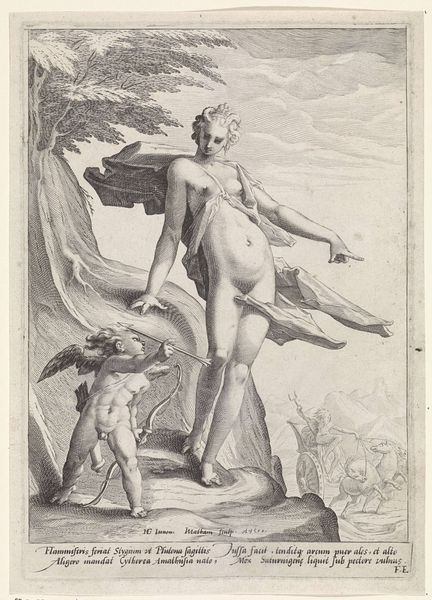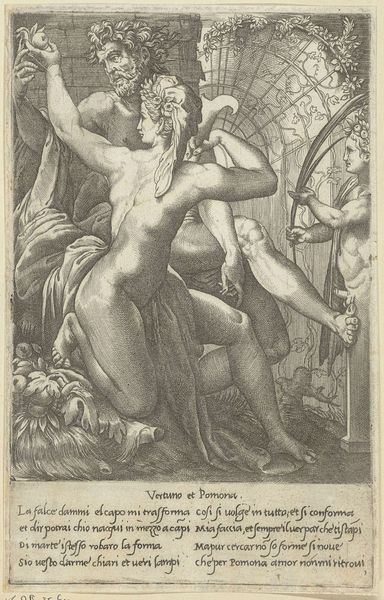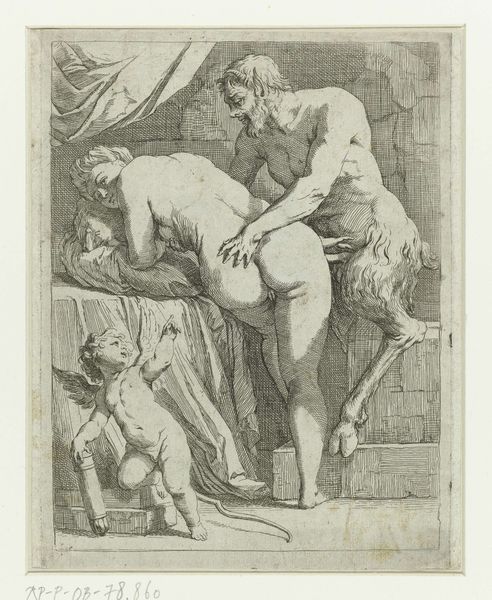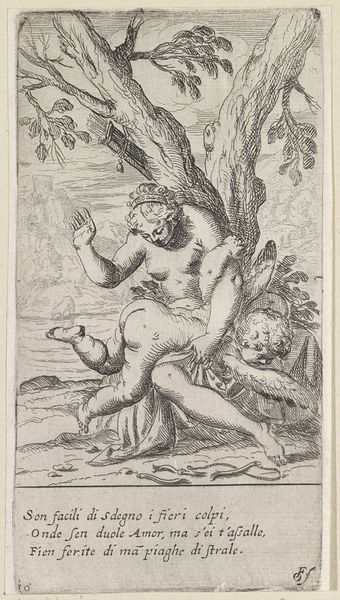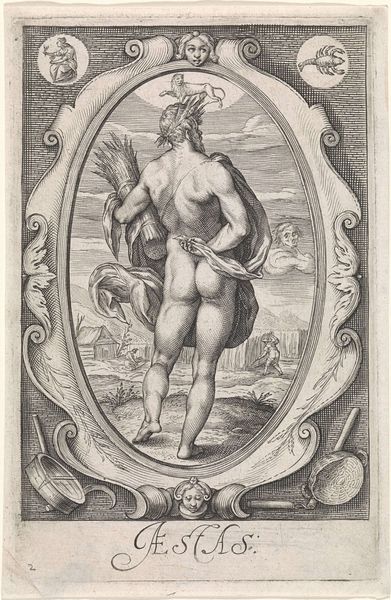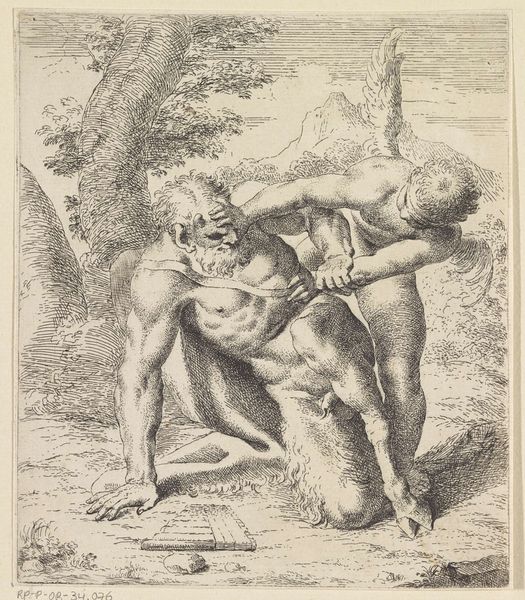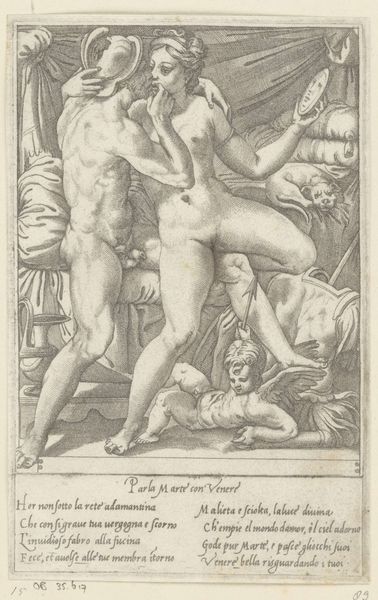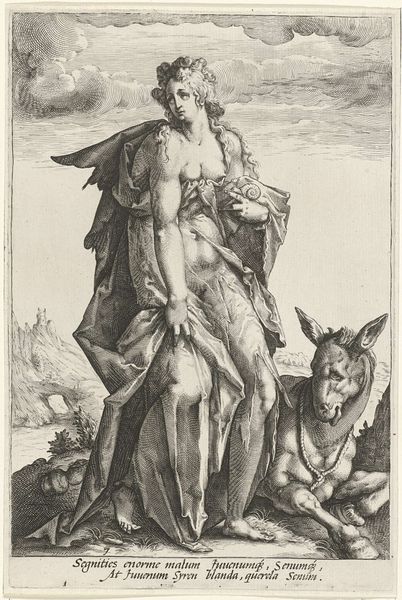
engraving
#
portrait
#
baroque
#
dog
#
vase
#
figuration
#
form
#
line
#
portrait drawing
#
genre-painting
#
nude
#
engraving
Dimensions: height 179 mm, width 118 mm
Copyright: Rijks Museum: Open Domain
Editor: We're looking at Jacob Matham's "Nymph with Greyhound," an engraving dating somewhere between 1581 and 1631. There's something very deliberate about the way the lines create texture and form. It’s quite detailed for a print. What do you notice about the materiality of this work, and the choices Matham made in producing it? Curator: The engraving technique itself speaks volumes. It's a reproducible medium, making the image accessible, but the level of detail suggests a higher status than simple mass production. Think about the labor involved – each line carefully etched, translating form into a system of marks. This labor then creates access for potential buyers of a particular social status. What’s interesting to you about how this medium contrasts with, say, painting at the time? Editor: Well, paintings were often unique objects commissioned by wealthy patrons. Prints, while still requiring skill, allowed for wider distribution. But I wonder if Matham was also making a commentary about accessibility and perhaps blurring the lines between luxury and everyday art? Curator: Precisely! Consider the paper itself. It's a commodity, produced through its own complex set of social and economic structures. Was it high-quality imported paper or a more common variety? Understanding the materials – ink, paper, tools – and their origins situates the work within a web of production and consumption. The seemingly simple image is rooted in specific historical systems of class and consumption. Editor: So, examining the engraving closely and researching its materials can give us a deeper understanding of its place in society and the artist’s intention? Curator: Absolutely. We need to always be asking about what went into making this image and its access points: both literally and metaphorically. Consider where it was sold, who could afford it, and how it might have been displayed. It reframes our understanding of the artwork beyond just its aesthetic value. Editor: That’s fascinating. I'll definitely be thinking more about the labor and social context involved in artmaking from now on. Curator: Wonderful. It transforms our appreciation. No artwork exists in isolation, and close looking into its processes enriches it more deeply.
Comments
No comments
Be the first to comment and join the conversation on the ultimate creative platform.


